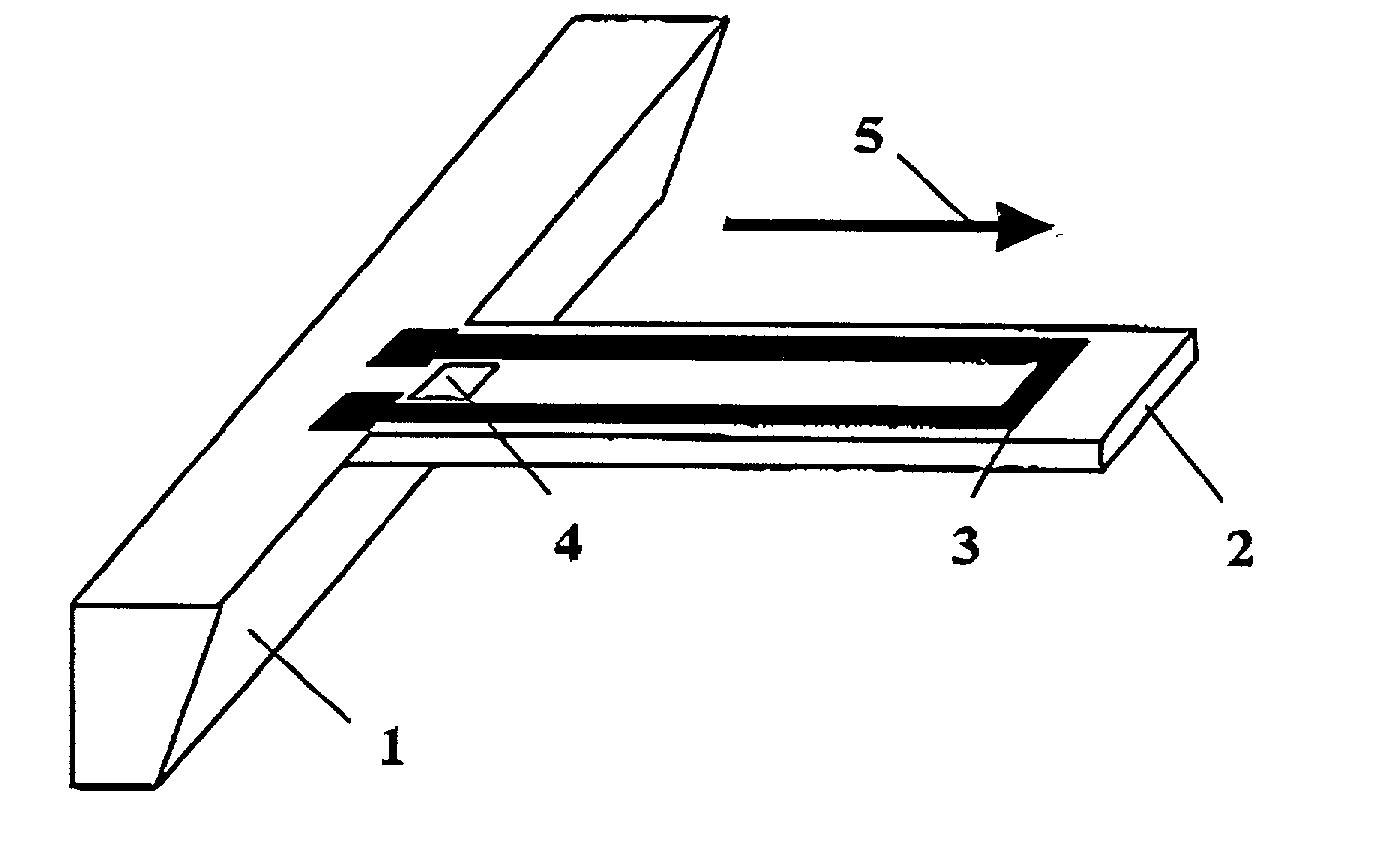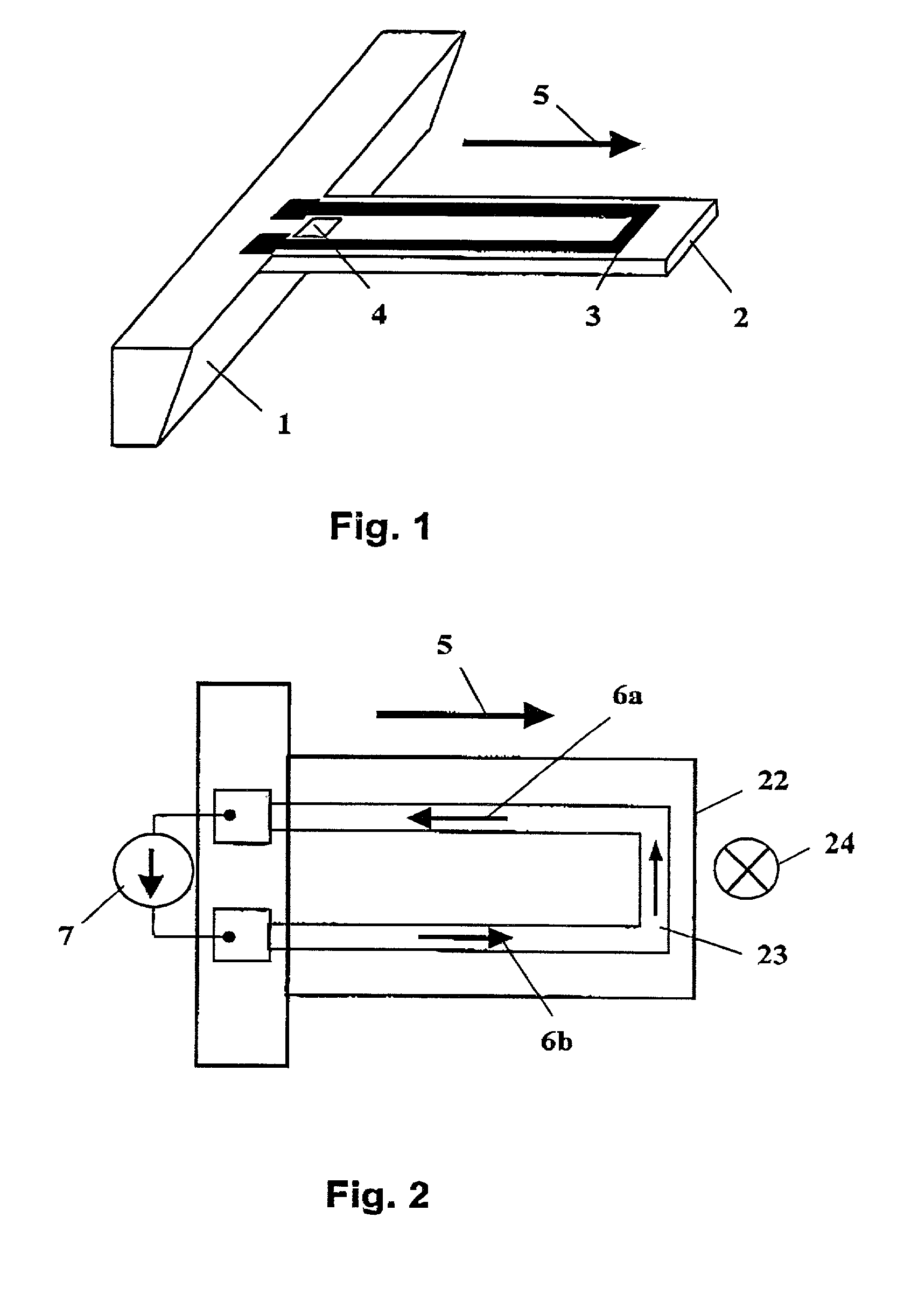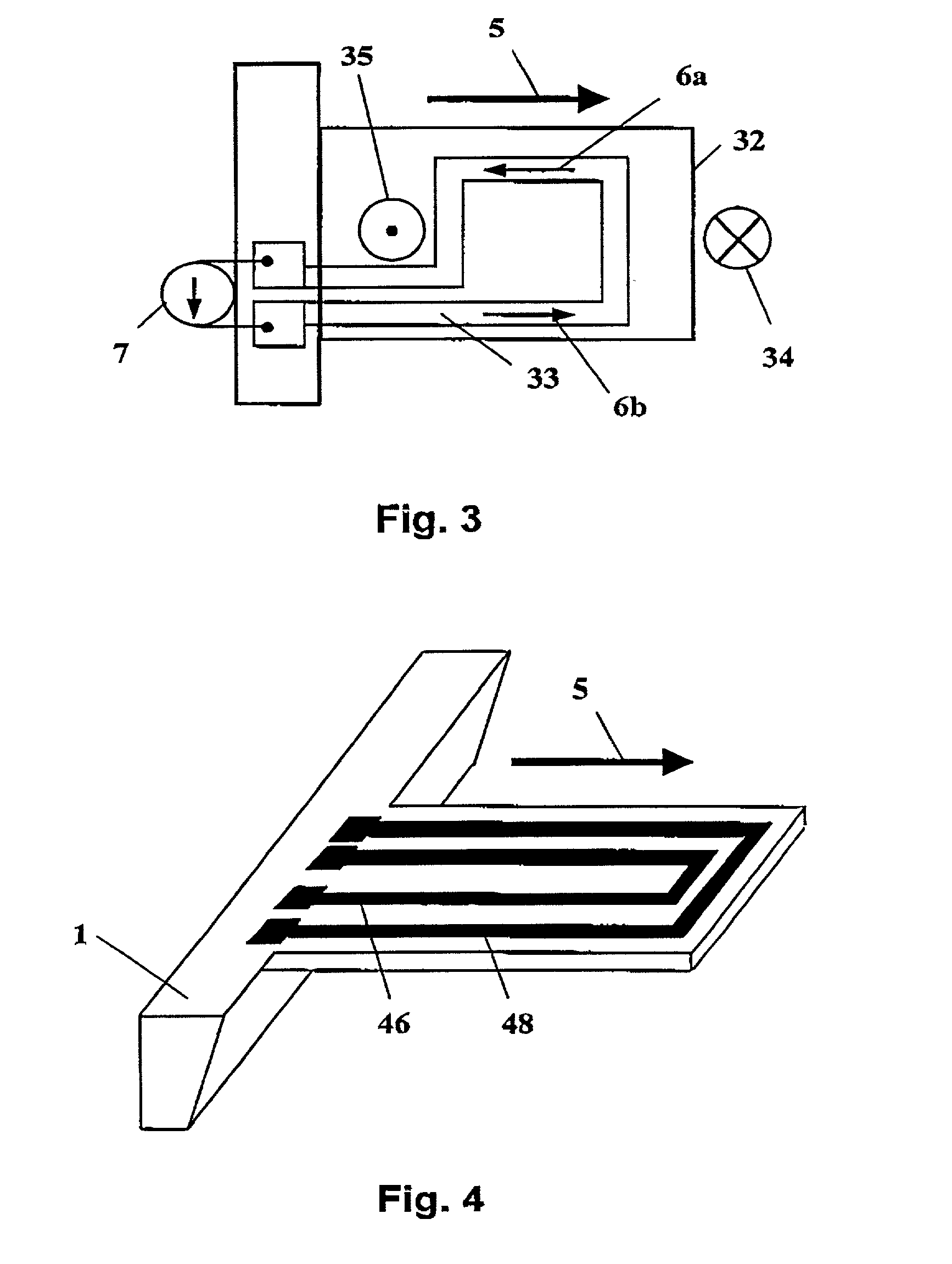Sensor apparatus and cantilever for it
a technology of cantilever and sensor, which is applied in the field of sensors, can solve the problems of limiting the applicability of cantilever, thermal actuation of cantilever, and requiring a relatively high heating power to excite cantilever at high frequencies, and achieves the effects of low power consumption, high sensitive chemical properties, and easy adaptability
- Summary
- Abstract
- Description
- Claims
- Application Information
AI Technical Summary
Benefits of technology
Problems solved by technology
Method used
Image
Examples
Embodiment Construction
[0030] FIG. 1 shows a typical layout of a cantilever according to the invention in perspective. Cantilever 2 is at one end fixed to support base 1 which is part of the assembly, not shown in detail. Both, support base 1 and cantilever 2 are made from semiconductor material, e.g. silicon. Thus, a deflection sensor 4 can be directly integrated on the surface of cantilever 2, here located close to support base 1. Also on cantilever 2 is a conductor forming a current loop 3 in form of a U, usually made from metal or another conductive material. Arrow 5 indicates the direction of a static in-plane magnetic field. The source of this magnetic field is not shown; a conventional permanent magnet, direct-current (DC) coils, or the like may be used.
[0031] FIGS. 2 and 3 show two variations of a cantilever 22 and 32 with different conductor loop shapes. In operation a current, driven by current source 7 and indicated by arrows 6a and 6b in both figures, is applied to current loops 23 and 33, res...
PUM
| Property | Measurement | Unit |
|---|---|---|
| mechanical deflections | aaaaa | aaaaa |
| electrical current | aaaaa | aaaaa |
| resonance frequency | aaaaa | aaaaa |
Abstract
Description
Claims
Application Information
 Login to View More
Login to View More - R&D
- Intellectual Property
- Life Sciences
- Materials
- Tech Scout
- Unparalleled Data Quality
- Higher Quality Content
- 60% Fewer Hallucinations
Browse by: Latest US Patents, China's latest patents, Technical Efficacy Thesaurus, Application Domain, Technology Topic, Popular Technical Reports.
© 2025 PatSnap. All rights reserved.Legal|Privacy policy|Modern Slavery Act Transparency Statement|Sitemap|About US| Contact US: help@patsnap.com



